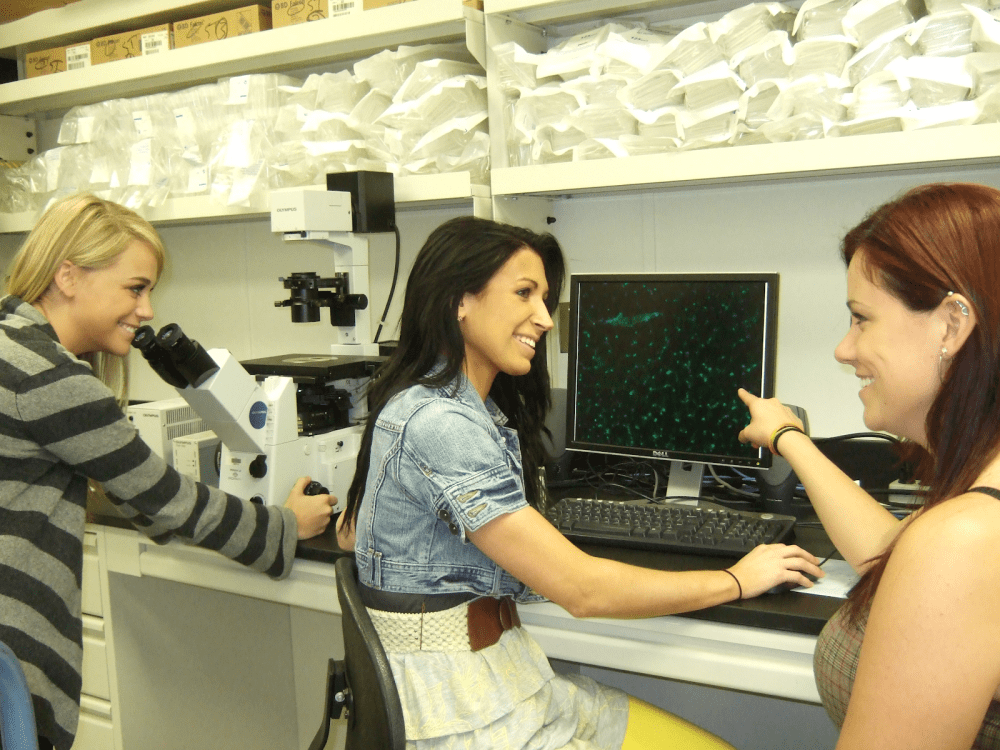Muscle Cell Biology
Research in this area studies the complex molecular mechanisms that regulate skeletal muscle health under various conditions (exercise, nutrition, aging, and disease).
Studying the signals that regulate skeletal muscle repair in age and disease.
Molecular Exercise Myology (MEM) Lab Mission
The MEM Lab is dedicated to examining the orchestration of signaling pathways in regulating skeletal muscle plasticity (regenerative potential and protein synthesis) within various paradigms including aging and disease. We use molecular and cellular techniques on various in vivo and in vitro skeletal muscle models. We study how Notch, Wnt, and mTOR affect regenerative potential, protein synthesis, metabolism, inflammation, and force production within aged or diseased muscles exposed to physiological stimuli. Notch signaling is considered critical for the early stages of repair, while Wnt and mTOR regulate the later stages of muscle repair. Still, the interactions of these pathways are not known, especially following physiological stimuli, including exercise. Furthermore, the effect of Notch and muscle protein synthesis (regulated by mTOR pathway) has not been studied. The ultimate goal of the MEM lab is to use the discoveries of cellular regulations of skeletal muscle to be translated to clinical populations.

Biosketch COS Profile Education: Ph.D. Applied Physiology, University of Toledo, Toledo, OH (2003), M.S. Exercise Science, University of Toledo, Toledo, OH (2001), B.S. Biology, University of Toledo, Toledo, OH (1995) Faculty Rank: Assistant Professor Personal Interests: Personal Interests: Shutzhund dog sport (Piedmont Shutzhund club), family support coordinator for the U.S. Air Force 118th Air Support […]
Active Projects
- The effect of obesity and Notch inhibition on muscle repair and muscle protein synthesis.
Obesity impairs the regenerative potential of skeletal muscle but the mechanisms are not known. Notch signaling, known to be important for muscle repair may be impacted by obesity but it is not known.
Young mice were fed a high-fat diet for 12 weeks and exposed to the novel Notch inhibitor, shRNA, and a bout of downhill running. We are currently examining the effect of obesity and Notch inhibition on muscle repair, muscle protein synthesis, and mTOR signaling.
- The effect of Breast Cancer and CAR T Cell Therapy on Contractile properties and Notch signaling.
Cancer cachexia is defined as a significant unintentional weight loss accompanied by muscle atrophy (loss of skeletal muscle mass) and decreased muscle strength, with or without fat loss. At least 50% of cancer patients are diagnosed with cachexia which results in functional limitations, exacerbated cancer progression, and, ultimately, early mortality, with reports of 1/3rd of cancer deaths attributed to cachexia. Cachexia impedes responsiveness to cancer therapy and may exacerbate tumor growth and metastasis. To our knowledge, there are no reports on the effect of Triple Negative Breast Cancer (TNBC) on muscle contractile properties. In addition, there are no studies on the effect of CAR T cell therapy on muscle properties. The purpose of this study is to determine the effect of TNBC and CAR T cell therapy on muscle function.
The overall study design is 3 groups of mice with 2 groups induced with TNBC cancer and 1 cancer-free healthy control group. In the tumor-bearing mice, one group received CAR T cell treatment, and the other group received mock T cell control. The healthy control group was not treated. Force function of the calf muscles are being measured as well as muscle regenerative properties.
- The orchestration of Notch, Wnt, and mTOR during myogenesis.
Notch, Wnt, and mTOR are important for muscle repair but their interaction is not well understand. Notch is known to be important for early stages of myogenesis but must be inhibited for the later stages. mTOR and Wnt may be upregulated during the later stages of muscle.
Using cell culture models, we are studying the effect of manipulating these pathways during proliferation and differentiation/fusion of myoblasts.

Lab life
WESTERN BLOT

CELL CULTURE
FLUORESCENT

LAB SPACE

MEM Lab has dedicated laboratory space of approximately 2000 ft2 where all equipment necessary to complete a wide range of molecular and cellular experiments are housed as well as designed cell culture room and ample space for student desks.
Specific equipment include: inverse fluorescent light microscopy (IX 71 by Olympus Microscope) western blotting (read by Licor Odyssey), Bead Blaster for generating tissue lysates, Real-Time PCR,cryogenic storage vials, and a microplate reader for ELISA-based hormone analysis. The cell culture room houses two Heracell automatic water-jacket incubators, a laminar flow biosafety cabinet and a portable cell culture aspirator.